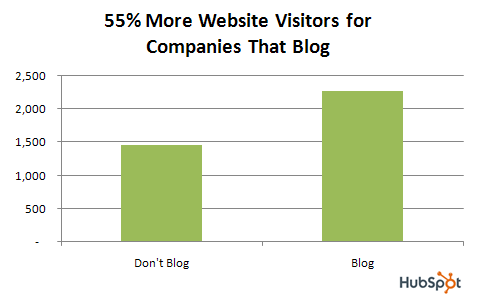
Get on the Pathway to Passionate Philanthropy, Not Forgettable Fundraising
Philanthropy is a mindset. An embracing culture. A noble value.
Fundraising is a means towards that end. Servant to philanthropy.
Philanthropy, not fundraising.
This has been the tagline for my business and blog since I began Clairification in 2011. It grew naturally out of my experiences working as a frontline development director for 30 years. I’ve always insisted that no single person could possibly receive credit for a donation. “Donors don’t give because of development staff,” I’d tell program staff. “They give because of the great work you do!”
Sustainable fundraising takes a village.
In fact, in my practice I went so far as to develop a point system for major gifts moves management (you can learn about it here) that ascribed many more points for a donor meeting with a program director than one with a development staffer. I wanted to show program staff how much they counted!
Everyone counts.
This is exactly the premise of the groudbreaking report commissioned in 2016 by the Evelyn & Walter Haas, Jr. Fund, “Beyond Fundraising: What Does it Mean to Build a Culture of Philanthropy?.” It was one of three reports centering on confronting chronic fundraising challenges, and showcased the paramount importance of building an organization-wide philanthropy culture as a paradigm for the 21st century. When the report came out, here’s what I said:
It’s about time.
And it was. And it still is. It’s important to understand that Haas Fund, Jr. isn’t the first to see things this way. In 2003 Penelope Burk wrote a book that became my bible, “Donor-Centered Fundraising.” In 2005 Kay Sprinkel Grace wrote a book that became my supplementary bible, “Beyond Fundraising- New Strategies for Innovation and Investment in Nonprofits.” And there were others before, and after, them. Yet arriving at a place where the philanthropic sector truly embraces this shift — a reframing in how organizations view the work of fund development — has been a slow process. And precisely because I still see too few organizations embracing this concept, I’ve decided to republish the thoughts I expressed when the report was first released.
If you’re new to the nonprofit field, what follows will be a walk through fundraising thought leadership history. If you’ve been doing this work a while, you’ll still find value in revisiting some of the thinking underlying the practice of philanthropy (philos/love + anthropos/humankind) facilitation.
The heart of the matter is love and values – all oriented for the public good.
Both Penelope and Kay come at fundraising from the perspective of the donor. Why do they care? What’s in it for them to become more invested? What values do they cherish and wish to express? What love seeks to be honored here? And, of course, it all boils down to feelings and values that are passionately held.
The great Hank Rosso, founder of The Fundraising School (now part of the Lilly School of Philanthropy at Indiana University), wrote about how fundraising is based on an exchange of values. Some folks love the arts. Others love the environment. Others… science, health care, human services, animals, justice, and so forth. Different nonprofits enact different values.
This is the philanthropic (or values) universe.
Within this universe, those who share the values your nonprofit enacts become your donors. Once you have clarity on these values (philanthropy), it’s your job to convey where you sit/what you do/why what you do is necessary/ and that you’re effective doing it. Your next job is to uncover folks who share the values your organization enacts. This is what is commonly called “development”. Finally, once a good common ground is found, you make the match! You ask for the investment that will assure the values are enacted and the donor’s passions are fulfilled. This is what’s commonly called fundraising (or “sales”).
You better believe fundraising — aka “sales” — is everyone’s job!
When Daniel Pink’s book, “To Sell Is Human,” came out I was grateful. Because it said so eloquently what I’d been trying to say for years. Selling, he writes, is the process of persuading someone (whether prospective donors, buyers, employees, bosses, children, parents or friends) to part with something of value (e.g., time, attention, point of view or resources). We spend a majority of our time trying to move others. So we may as well embrace this, and begin to understand the key principles of persuasion [as brilliantly outlined in Influence, by Robert Cialdini; also see Psychology of Giving: Influence Your Affluence by Using the Science of Persuasion].
When you persuade someone who passionately shares the values your organization enacts to join with you in enacting those values, you’re persuading them to do something they’re already inclined to do! How can this possibly be a bad thing?
We erroneously think “selling” is bad.
In fact, it’s probably even more of a taboo word in nonprofits than the word “fundraising.” People just don’t like it. Pink did an experiment where he asked people to give him the first word that came to their minds when they thought of “sales/selling.” They answered with such words as:
- Yuk
- Pushy
- Difficult
- Hard
- Necessary
- Annoying
- Manipulative
- Ugh
- Sleazy
Nonprofits, similarly, think fundraising is evil.
I was blown away by Pink’s results because, remarkably, when I’d done a similar experiment in October 2012 with a number of nonprofit boards of directors, I’d uncovered almost identical answers! [See How to Overcome the Money Taboo and Succeed with Fundraising]. “Fundraising” met with universal negatives; “philanthropy,” however, met with universal positives. The former was perceived as organization-centric and taking away; the latter as constituent-centric and giving.
Interestingly, although many folks including the aforementioned Hank Rosso, Kay Grace, Penelope Burk and yours truly have seen this writing on the wall for years, the time was not ripe until the 21st century for philanthropy, not fundraising to become prime time material. What made the difference?
The digital revolution fundamentally changed the rules, and people’s perceptions.
This, at least, is my humble opinion. Again, I’m not the only one. As Brian Solis tells us in The End of Business As Usual, “a new breed of consumer is emerging, and they’re changing the very foundation of business.” The game has changed and the playing field has been leveled. Leveled how, you ask?
Before the digital revolution, information was in the hands of the few.
And since information is power, those who didn’t have enough of it had to be wary. This created the mindset of caveat emptor, where the buyer – and prospective donor – must beware of those who might trick them to part with their hard-earned money.
How could such trickery occur? From an information imbalance that no longer exists. Now information is readily available to everyone. That’s why the digital revolution has so fundamentally changed business. All business, including nonprofit’s.
Our view of sales and fundraising as sleazy and manipulative is a relic.
It comes from an outdated mindset. It’s now a buyer’s market. In the world where the seller had the information advantage, the salesperson’s mantra was ABC – Always Be Closing. Pink tells us that today ABC stands for Attunement (perspective taking), Buoyancy (staying afloat in an ocean of rejection) and Clarity (synthesizing and curating information that helps folks identify and resolve their problems).
Attunement, buoyancy and clarity are requisite skills for today’s world.
- How attuned are you to your constituents’ values, needs and desires?
- How buoyant and adaptive can you be in responding to constituent demands?
- How do you get clarity on constituent challenges and ways you can help folks find the meaning they seek in their lives?
“Always be closing” hasn’t worked out well for nonprofits for years.
It’s a transaction-based paradigm that focuses on one sale, rather than a life-long relationship. And it’s led to horrific rates of donor retention. The latest Fundraising Effectiveness Project Report shows nonprofits keeping, on average, just 18% of first-time donors and only between 40 and 45% of all donors. This compares with retention rates for for-profit businesses of 80 – 90%. The social benefit sector can’t survive this way. Your organization can’t survive this way.
How centered is your organization – that means everyone — on your donor?
Have you substituted “attunement, buoyancy and clarity” – the path to transformational relationships – for “always be closing?” Do you embrace the fact you can’t survive without your donors? Do you make them feel like the essential change makers they are?
Do you include your donors in your core mission?
This is something Richard Perry and Jeff Schreifels write about in “It’s Not Just About the Money.” Everyone in your organization – staff and volunteers – must embrace the fact philanthropic giving is an exchange of work and value.
- It’s more about outcomes than dollars.
- It’s an expression of love.
- It’s a way to live out one’s values.
- It cares for others and transforms lives.
If you take care of your donor, they’ll take care of you.
This, of course, requires a plan. And that’s where too often nonprofits fall down on the job. They think “culture of philanthropy” simply means you’re a “good guy.” That by virtue of being a nonprofit, staffed by caring people doing good work, folks will naturally reach out and give. And keep on giving.
“We often think of culture as something ‘squishy’ or qualitative, when in fact it is achieved through highly quantitative tasks. To build and sustain a culture of philanthropy takes a lot of planning, and the implementation of specific policies and practices.”
— Troy Arnold, Director of Development for the Justice & Diversity Center of the Bar Association of San Francisco
Creating a culture of philanthropy is not just a nicety.
It’s virtually impossible (and downright dumb) to try to relegate donor-facing contacts to one person or department when everyone has the ability to connect, through multiple channels, at their fingertips. So why not acknowledge this and use it to our advantage?
In my next post I’ll continue with Part 2, discussing how the Haas, Jr. Fund’s report lays out specific ways for nonprofits to consistently take care of their donors — showing the way to becoming attuned, buoyant and clear by treating all people, donors and non-donors, as your partners in philanthropy.
NOTE: I would be remiss if I didn’t mention that the Haas Fund, Jr.’s report no doubt owes gratitude to many of the sector’s leaders who’ve written eloquently about a culture of philanthropy in the past. I mention just a few who’ve inspired me, including Hank Rosso, Robert Payton, Simone Joyaux, Kay Sprinkel Grace, Gail Perry , Jeff Schreifels, Richard Perry and Penelope Burke. If I’ve missed anyone important, and I’ve no doubt done so, please let me know! And please share your thoughts in the “comments” section, below.
And if you’re not yet a Clairification School student, please enroll here so you’ll be sure to get Part 2 of this article delivered direct to your inbox!
#Meaning #Philanthropy #Fundraising #Part










